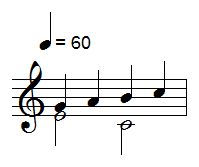Topic: Information
This week’s reading
- Here Comes Everybody by Clay Shirky (2008)
Read the Intro and Chapter 1. Go deeper if inspired. - The Filter Bubble Intro and Chapter 2 by Eli Pariser (2010)
Here Comes Everybody
Interesting story of how the power of the early social networks got a stolen phone returned to its rightful order, while breaching what in today’s world would be lots of privacy regulations…
The Filter Bubble
Filter bubbles. Best avoided. If you can.
There are reasons why a lot of IT people don’t use social media – and get upset when their kids do – and it’s because they don’t want to become the free product.
A very long time ago, like last century or something, I worked for an online store. Online stores, even back then, tried to figure out people’s shopping habits so they could sell them more stuff. The shopping habits of the people who used our store were mashed together and various inferences made. A simplistic example of this inference might be, if somebody buys product A and product B, then maybe other people who buy product A might also like to buy Product B, and so on. This inference and matching job ran overnight – all night – on literally the most powerful computer that the online store could afford, a Sun E10000, which looked like some kind of giant wardrobe with a Dr Who flavour, and apparently cost a few hundred thousand bucks:

These days, we’d probably just feed the data to a Machine Learning algorithm in the Cloud and let it loose.
Information Representation
The challenge is to bring an example of the same ‘information’ that is represented in different ways.
An example is music!
Notation
Here’s some standard musical notation:

Here’s the same music in MIDI notation
t=0 : 0x90 - 0x40 - 0x40 (Start of E3 note, pitch = 64)
t=0 : 0x90 - 0x43 - 0x40 (Start of G3 note, pitch= 67)
t=1 : 0x80 - 0x43 - 0x00 (End of G3 note, pitch=67)
t=1 : 0x90 - 0x45 - 0x40 (Start of A3 note, pitch=69)
t=2 : 0x80 - 0x45 - 0x00 (End of A3 note, pitch=69)
t=2 : 0x80 - 0x40 - 0x00 (End of E3 note, pitch=64)
t=2 : 0x90 - 0x3C - 0x40 (Start of C3 note, pitch = 60)
t=2 : 0x90 - 0x47 - 0x40 (Start of B3 note, pitch= 71)
t=3 : 0x80 - 0x47 - 0x00 (End of B3 note, pitch= 71)
t=3 : 0x90 - 0x48 - 0x40 (Start of C4 note, pitch= 72)
t=4 : 0x80 - 0x48 - 0x00 (End of C4 note, pitch= 72)
t=4 : 0x80 - 0x3C - 0x40 (End of C3 note, pitch = 60)What’s MIDI?
MIDI is an acronym for Musical Instrument Digital Interface, and is a hardware and software specification that enables computers and music synthesizers to communicate with each other. Fundamentally, it’s a text based form for describing music so that an electronic musical instrument can output it as audio.
Finally, we have the music itself – an audio representation of the information above.
